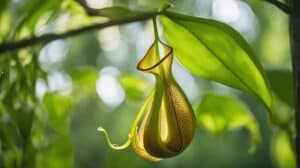Dragon fruit, also known as pitaya, is a tropical fruit that has gained popularity in recent years due to its unique appearance and health benefits. The fruit comes from the Hylocereus undatus plant, which is native to Mexico and Central America but is now grown in many other parts of the world. In this article, we will explore the propagation of the dragon fruit plant and how to grow it successfully.

Dragon fruit plants can be propagated through cuttings or seeds. Cuttings are the most common method and involve taking a section of stem from a mature plant and allowing it to root and grow into a new plant. The cuttings should be taken from healthy, disease-free plants and should be allowed to dry for a few days before being planted. Seeds can also be used, but they are less reliable and take longer to grow into mature plants.
Understanding Dragon Fruit
Origins and Characteristics
Dragon fruit, also known as pitaya, is a tropical fruit that comes from the cactus family. The plant is native to Central and South America but is now grown in many parts of the world, including Asia, Australia, and the United States. The fruit has a unique appearance, with a bright red or yellow outer skin and green, scaly leaves that resemble a dragon’s scales.
The fruit’s flesh is white with small black seeds and has a mild, sweet taste similar to melon or kiwi. There are three main types of dragon fruit: white-fleshed, red-fleshed, and yellow-fleshed. The white-fleshed variety is the most common and has a slightly sweeter taste than the other two.
Dragon fruit is a low-calorie fruit that is rich in vitamins and minerals. It is also a good source of antioxidants, which can help protect the body from damage caused by free radicals.
Nutritional Value
Dragon fruit is a good source of vitamin C, which is essential for a healthy immune system. It also contains vitamin B6, which helps the body produce energy and maintain brain function. The fruit is also rich in iron, which is important for healthy blood and oxygen transport throughout the body.
One cup of dragon fruit contains approximately:
- Calories: 136
- Carbohydrates: 29 grams
- Fiber: 7 grams
- Protein: 4 grams
- Fat: 0.4 grams
- Vitamin C: 34% of the Daily Value (DV)
- Iron: 10% of the DV
- Vitamin B6: 8% of the DV
Overall, dragon fruit is a nutritious and delicious fruit that can be enjoyed on its own or used in a variety of recipes. With its unique appearance and health benefits, it’s no wonder that dragon fruit has become a popular exotic fruit around the world.
Propagation Techniques

Dragon fruit plants can be propagated through seeds or stem cuttings. Each method has its own advantages and disadvantages.
Seed Propagation
Seed propagation is the easiest and simplest method. The seeds can be collected from the fruit, washed and dried in the shade. The seeds can then be sown in a pot or directly in the ground. It is important to note that seed propagation may not produce the same quality of fruit as the parent plant. The germination rate of the seeds is also low, and it may take up to 3 years for the plant to start producing fruit.
Stem Cutting Propagation
Stem cutting propagation is a more reliable method to produce plants with the same quality of fruit as the parent plant. The stem cuttings should be taken from a healthy and mature plant. The cuttings should be at least 30cm long and have at least 3 nodes. The cuttings should be dried in the shade for a few days before planting. The cuttings can be planted directly in the ground or in a pot. It is important to provide support for the cuttings until they form roots. The plant will start producing fruit in 1-2 years.
Propagation is an important aspect of dragon fruit farming. By using the appropriate propagation technique, farmers can ensure that they have a consistent supply of high-quality fruit.
Plant Care and Maintenance

Soil and Watering Requirements
Dragon fruit plants thrive in well-draining soils that are rich in organic matter. A mixture of sand, perlite, and peat moss is ideal for growing this plant. The soil pH should be between 6.0 and 7.0. Overwatering can cause root rot, so it’s essential to let the soil dry out slightly between watering sessions. During the growing season, the plant should be watered once a week, and during the dormant season, watering should be reduced to once every two weeks.
Light and Temperature Conditions
Dragon fruit plants require full sunlight to grow and produce fruits. They can tolerate partial shade, but it will reduce the yield of fruits. The ideal temperature range for this plant is between 65°F and 85°F. Temperatures below 50°F can cause damage to the plant, so it’s essential to protect it from cold weather.
Fertilization and Pruning Practices
Dragon fruit plants require regular fertilization to produce healthy fruits. A balanced fertilizer with an NPK ratio of 10-10-10 should be applied once a month during the growing season. Pruning is essential to promote the growth of new branches and fruits. The plant should be pruned once a year after the fruiting season is over. All damaged and diseased branches should be removed, and the remaining branches should be trimmed to promote new growth.
Frequently Asked Questions

How can I start growing my own dragon fruit plant from seeds?
Starting a dragon fruit plant from seeds is relatively easy. First, remove the seeds from the fruit and rinse them in water to remove any flesh. Then, allow the seeds to dry for a few days. Plant the seeds in a well-draining soil mix and keep them moist. Germination should occur in 2-3 weeks.
What is the best environment for propagating a dragon fruit plant?
Dragon fruit plants prefer warm temperatures and high humidity. They also require well-draining soil and plenty of sunlight. A temperature range of 65-85°F (18-29°C) is ideal for propagation.
Can you propagate dragon fruit plants from cuttings, and if so, how?
Yes, dragon fruit plants can be propagated from cuttings. Simply cut a healthy stem from the parent plant and allow it to dry for a few days. Then, plant the cutting in well-draining soil and keep it moist. Rooting should occur in 2-3 weeks.
What care do dragon fruit cuttings need to successfully root?
To successfully root a dragon fruit cutting, keep the soil moist but not waterlogged. Provide the cutting with bright, indirect light and maintain a warm, humid environment. Avoid direct sunlight and cold temperatures.
How long does it take for a dragon fruit cutting to root and grow?
A dragon fruit cutting should root within 2-3 weeks. Once it has rooted, it will begin to grow and produce new stems and leaves. With proper care, a dragon fruit plant can reach maturity and produce fruit within 2-3 years.
Are there any common issues to watch out for when propagating dragon fruit plants?
One common issue when propagating dragon fruit plants is overwatering. Dragon fruit plants prefer well-draining soil and can be susceptible to root rot if the soil is too wet. Another issue is poor lighting, which can cause the plant to become leggy and weak. Finally, be sure to protect the plant from pests and diseases, which can quickly damage or kill the plant.













